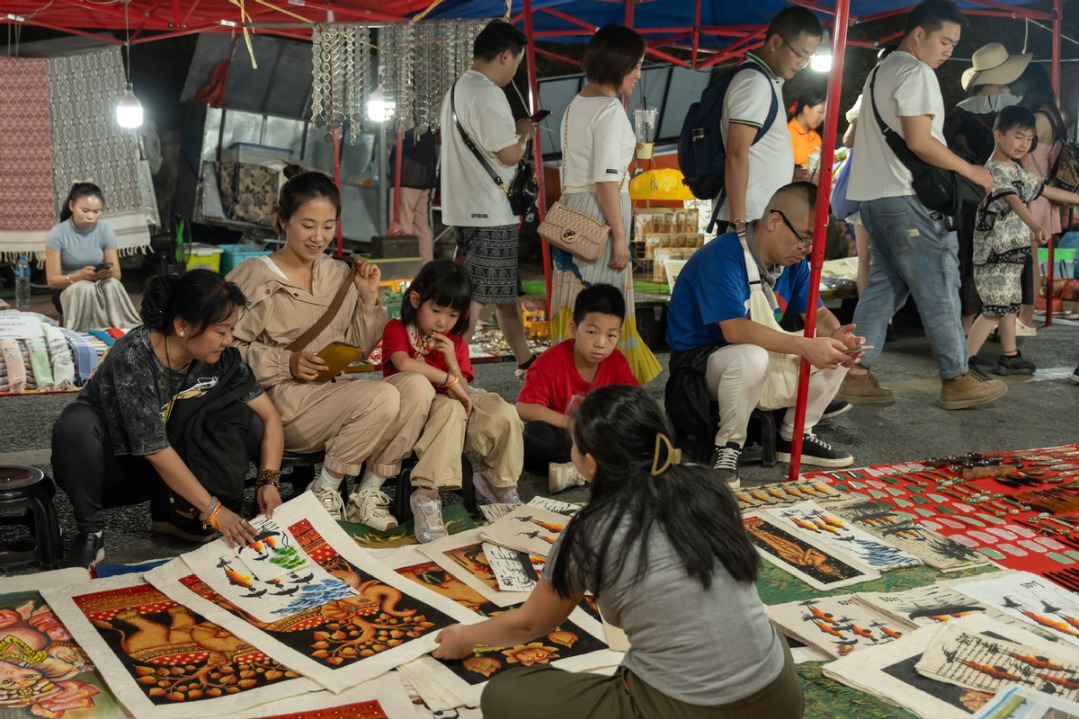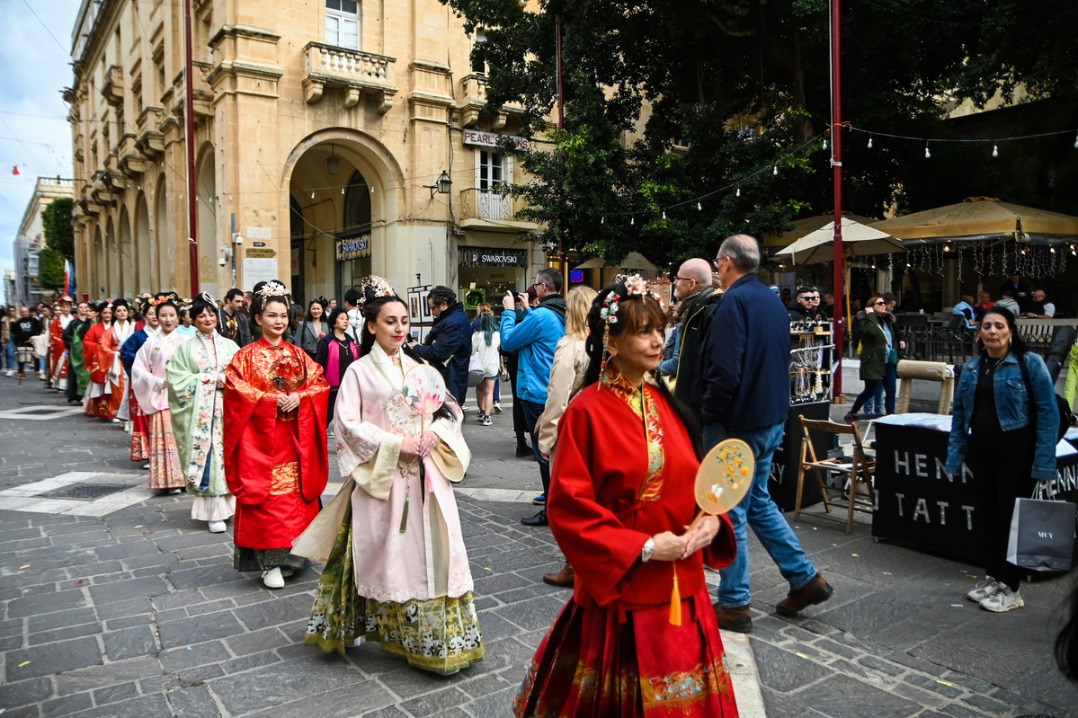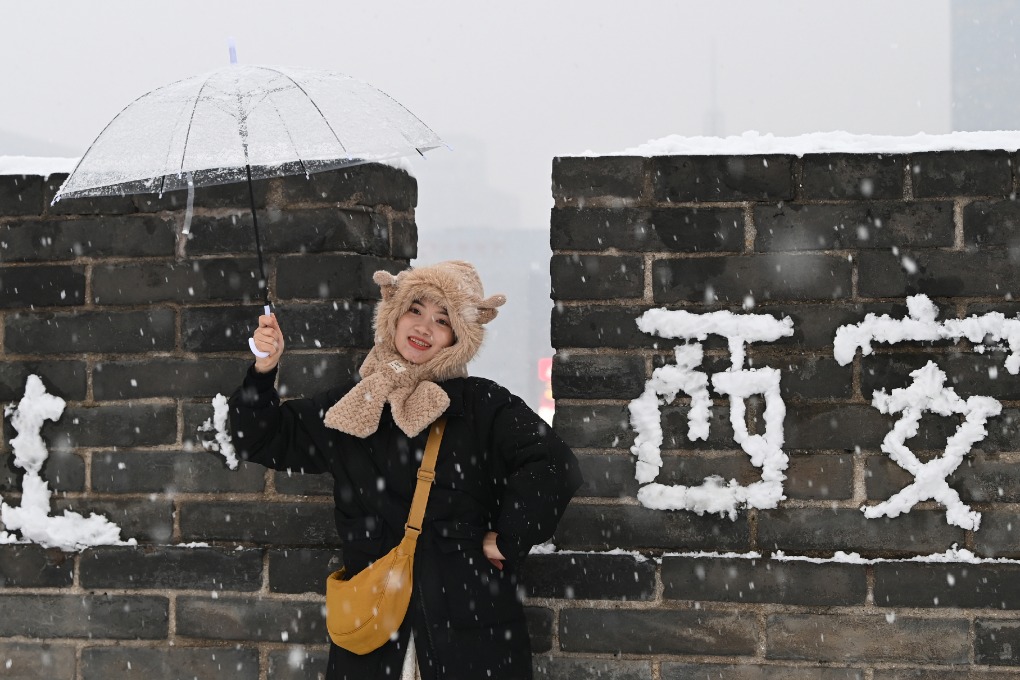Chinatowns in US hit by gentrification
By Belinda Robinson in New York | China Daily | Updated: 2023-08-14 07:30

Skyscrapers and rising rents threaten to undermine vibrant cultural centers
Chinatowns across the United States are being irrevocably changed by large-scale building developments, gentrification and rent rises that threaten to dim the culture that made the areas vibrant, displacing long-standing residents.
In Manhattan's Chinatown the looming development of One Manhattan Square, a 72-story skyscraper that costs more than $1.2 million per residential unit, could have a knock-on effect on the cost of rent for long-time residents in nearby properties, opponents say.
Extell Development, JDS Development Group and Chetrit Group in New York also plan to add four more high-rises to the area.
Last year a New York City Council member, Christopher Marte, the Coalition to Protect Chinatown and the Lower East Side and residents filed a lawsuit against the owners of the Two Bridges Complex in Lower Manhattan, saying it would bring pollution. However, in April a judge dismissed the suit.
Chinatowns emerged in the US in the mid-1800s after early Asian immigrants arrived to build railways. After work dried up and in the face of discrimination, the community banded together to create self-sufficient business centers that still stand today.
However, in the past few years Asian residents have left Chinatown in New York in larger numbers than in any other borough. Some have chosen to live in Brooklyn and Queens, which have their own Chinatowns, such as Sunset Park and Flushing, according to the 2020 US Census.
It is a far cry from the past, when Chinatown in Manhattan was reputed to have the largest concentration of ethnic Chinese in the Western Hemisphere. In 2020 it had 67,000 residents, at least 55 percent of whom were of Asian descent, along with 38,000 workers and up to 4,000 businesses.
The Museum of Chinese in America, a nonprofit organization in New York, whose mission is to document Chinese American history, culture and heritage, says Chinatown holds significant importance not just to local Chinese but to the rest of the US as well.
Nancy Yao Maasbach, the museum's president, told China Daily: "Neighborhoods like Chinatown… merge one culture with the myriad of other cultures that comprise the American way of life."
It is not just luxury developments that are threatening to change these areas. In New York there was a successful protest against a proposed jail and homeless shelter. In other cities, protests are continuing against large sports venues and stadiums.
In Philadelphia plans for an arena costing $1.3 billion for the basketball team the Philadelphia 76ers, due to open in 2031 and just a block from the historic Chinatown, have upset residents and local business owners.
"Hands off Chinatown" was the cry from a group of about 200 community residents and advocates at a protest in December gathered for a town hall meeting against the stadium, local reports said. In June thousands marched again from Chinatown to city hall to make their voices heard.
The Chinatown in Washington has fallen victim to gentrification and changes that have decimated the area, locals said.
An open letter in The Philadelphia Inquirer newspaper last year by Washington residents discussed how the Washington Convention Center and Capital One sports arena used 25 percent of their land and shut out Chinese residents, businesses and culture. They warned those in Philadelphia of what may be ahead.
In Oakland, California, residents protested in June against plans for a new Oakland Athletics baseball park just 1.6 kilometers from the city's Chinatown. The plans were scrapped in February. Developers are now expected to build the stadium in Las Vegas.
Unexpected demolition
In Detroit's historic Chinatown a dilapidated two-story building owned by Olympia Development Management of Virginia was unexpectedly demolished on July 29, much to the dismay of local city council members and advocates who had rallied to save it.
Four days earlier Detroit City Council had voted to delay the demolition until September. However, the city's corporation counsel allowed the demolition to proceed.
Detroit no longer has a central place where the Chinese community is located. In the early 20th century recent Chinese immigrants moved near Third Avenue and Bagley Street. President Dwight Eisenhower's decision to expand a highway in 1956 displaced many residents.
As most Chinatowns in the US undergo changes that result in an exodus of residents, the population of Chicago's Chinatown has bucked the trend, doubling its Chinese population between 1990 and 2020, the US Census Bureau said.
However, it has been unable to escape large-scale developments in the area. A $7 billion high-rise residential and office tower called The 78 near the north of Chinatown could change much of the area, local reports quoted residents as saying.






















